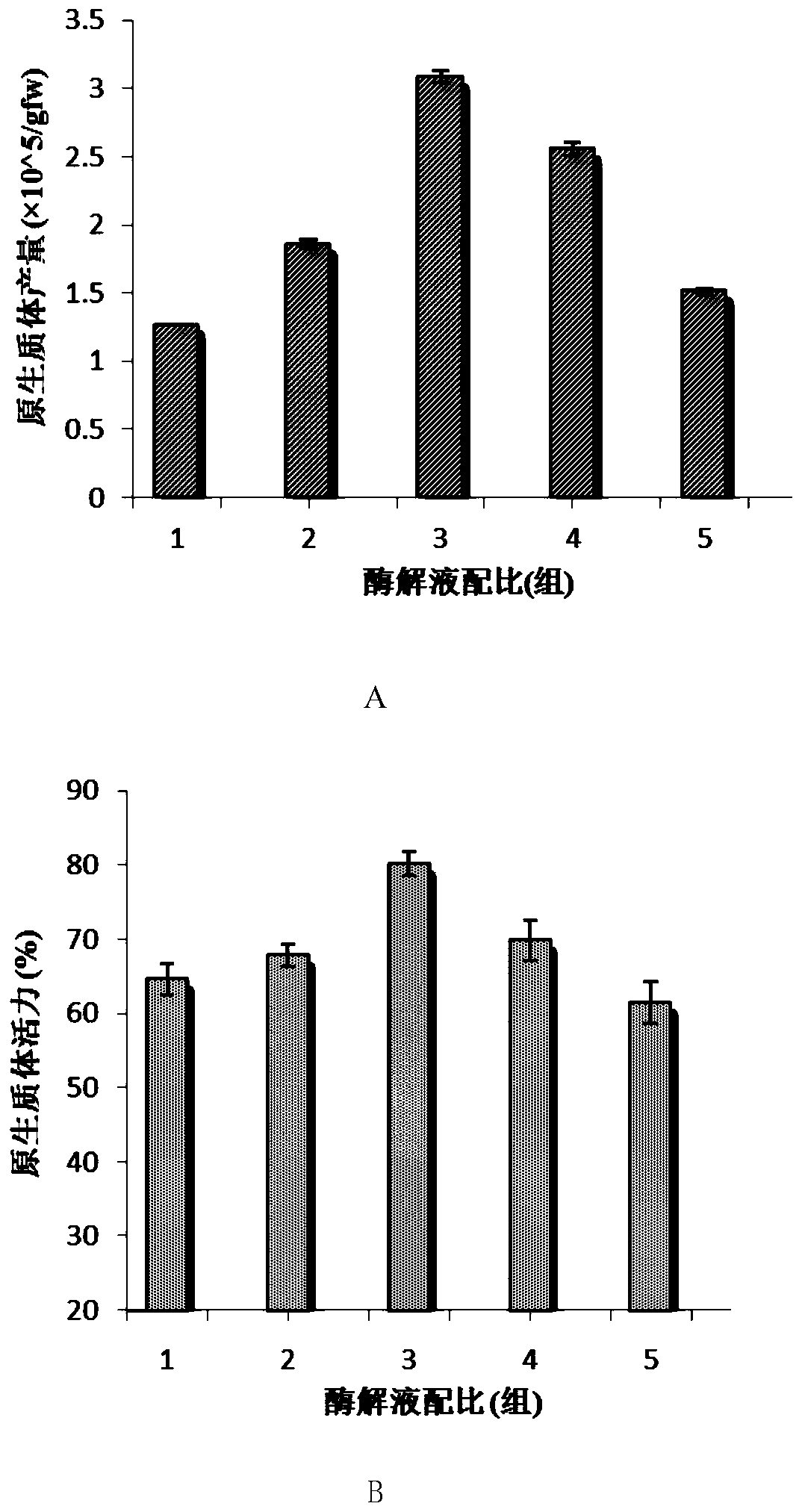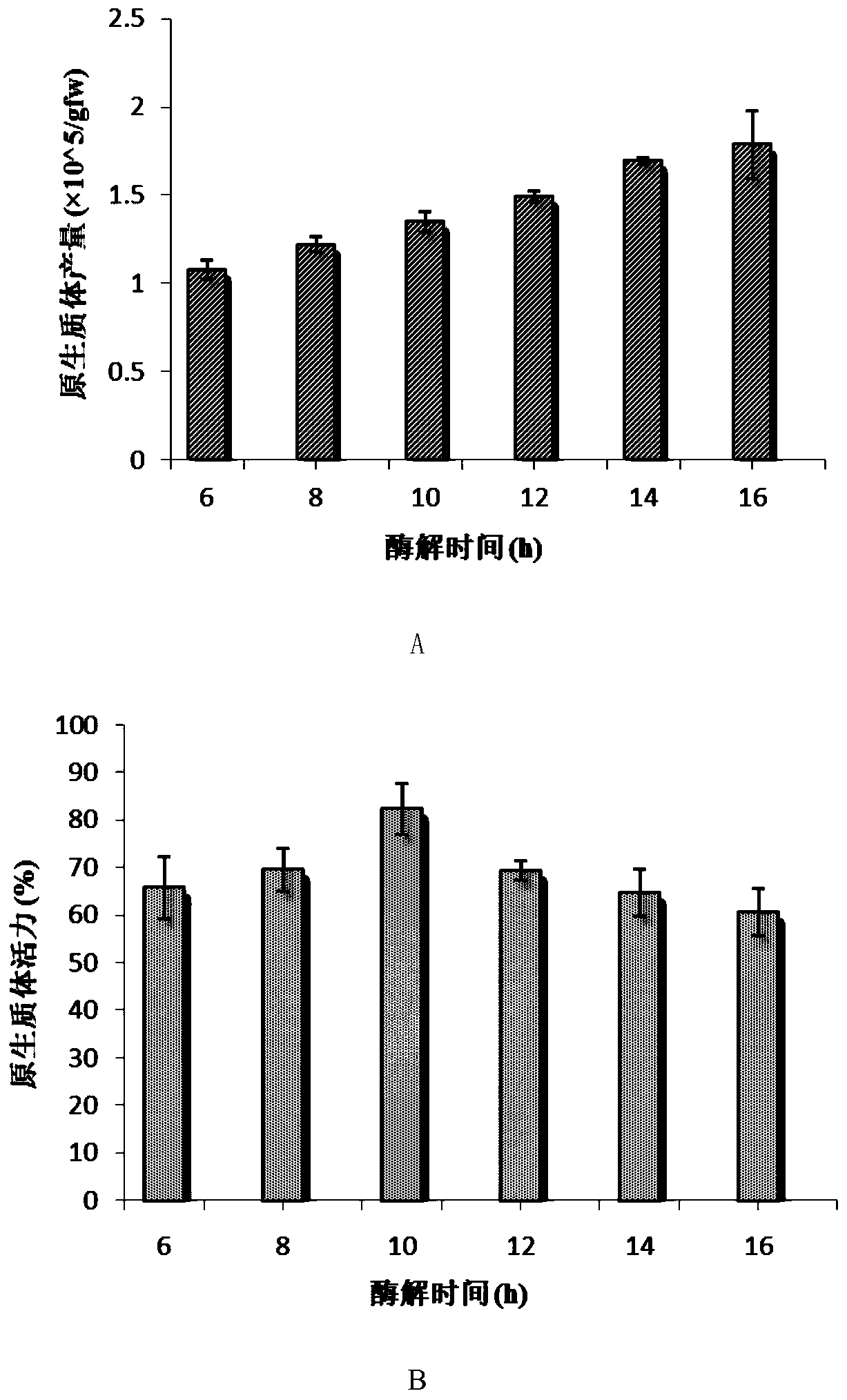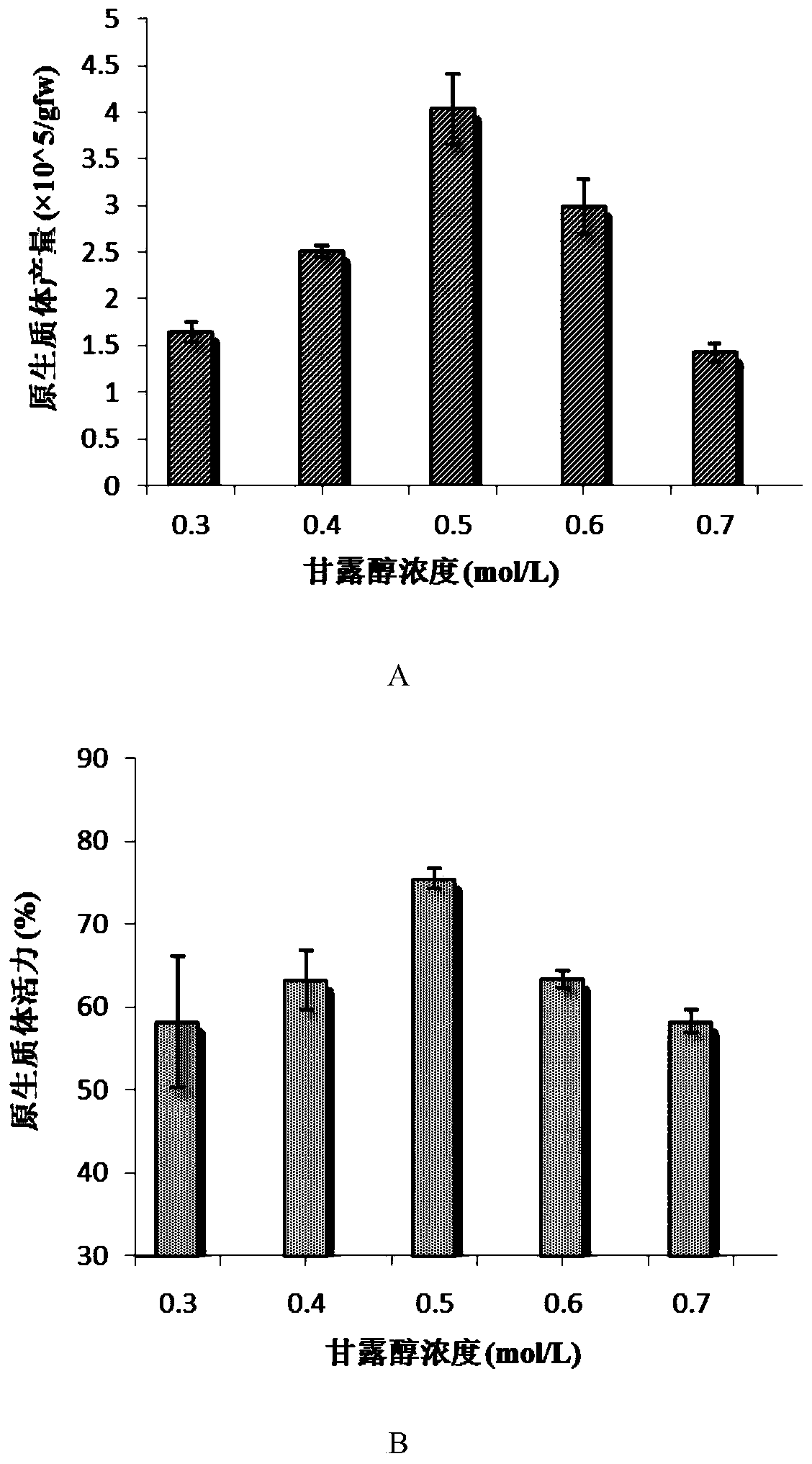A kind of separation and instantaneous transformation method of tripterygium wilfordii protoplast
A technology of protoplasts and separation methods, applied in the field of plant tissue culture, can solve the problems of restricting the in-depth study of tripterygium wilfordii functional genes and synthetic biology, research blanks of tripterygium wilfordii protoplasts and transient transformation, etc.
- Summary
- Abstract
- Description
- Claims
- Application Information
AI Technical Summary
Problems solved by technology
Method used
Image
Examples
Embodiment 1
[0056] Embodiment 1, a kind of separation and purification method of Tripterygium wilfordii suspension cell protoplast and its activity detection
[0057] 1. Preparation of Tripterygium wilfordii suspension cells
[0058] Tripterygium wilfordii suspension cells are derived from callus tissue, have a large number of intercellular spaces, cell walls are easily hydrolyzed by enzymes, have the advantages of fast growth and rapid accumulation of secondary metabolites, and are ideal materials for preparing protoplasts. The specific preparation method is as follows:
[0059] 1. Obtaining callus tissue
[0060] Sterilize the young shoots of Tripterygium wilfordii, cultivate aseptic seedlings from cuttings, then take the new leaves of the aseptic seedlings, cut them into small pieces of about 0.5cm×0.5cm, and inoculate them with 0.5mg / L 2,4-D ( Beijing Dingguo Changsheng Biotechnology Co., Ltd., DH101-1) on MS agar medium (Caisson Labs, MSP22-50LT) at 25°C in the dark to induce callu...
Embodiment 2
[0124] Example 2, Application of Tripterygium wilfordii Suspension Cell Protoplasts in Transient Transformation and Expression of Exogenous Genes
[0125] The transient transformation of tripterygium wilfordii suspension cell protoplasts was studied by using PEG-mediated transformation method, the specific steps are as follows:
[0126] 1. Adjust the concentration of the purified protoplasts obtained in step 3 of Example 1 to about 5×10 5 individual / mL to obtain the protoplast solution;
[0127] 2. Tap and mix 200 μl of protoplast solution, 20 μg of E3025 plasmid (the E3025 plasmid has its own GFP coding sequence, and the nucleotide sequence of the E3025 plasmid is shown in sequence 1) and 220 μL of PEG solution to obtain the transformation mixture. The transformation mixture was induced for 20 minutes under the conditions to obtain the transformation mixture;
[0128] 3. Dilute the transformation mixture with 880 μL W5 solution at room temperature, then gently shake the cen...
PUM
 Login to View More
Login to View More Abstract
Description
Claims
Application Information
 Login to View More
Login to View More - R&D
- Intellectual Property
- Life Sciences
- Materials
- Tech Scout
- Unparalleled Data Quality
- Higher Quality Content
- 60% Fewer Hallucinations
Browse by: Latest US Patents, China's latest patents, Technical Efficacy Thesaurus, Application Domain, Technology Topic, Popular Technical Reports.
© 2025 PatSnap. All rights reserved.Legal|Privacy policy|Modern Slavery Act Transparency Statement|Sitemap|About US| Contact US: help@patsnap.com



